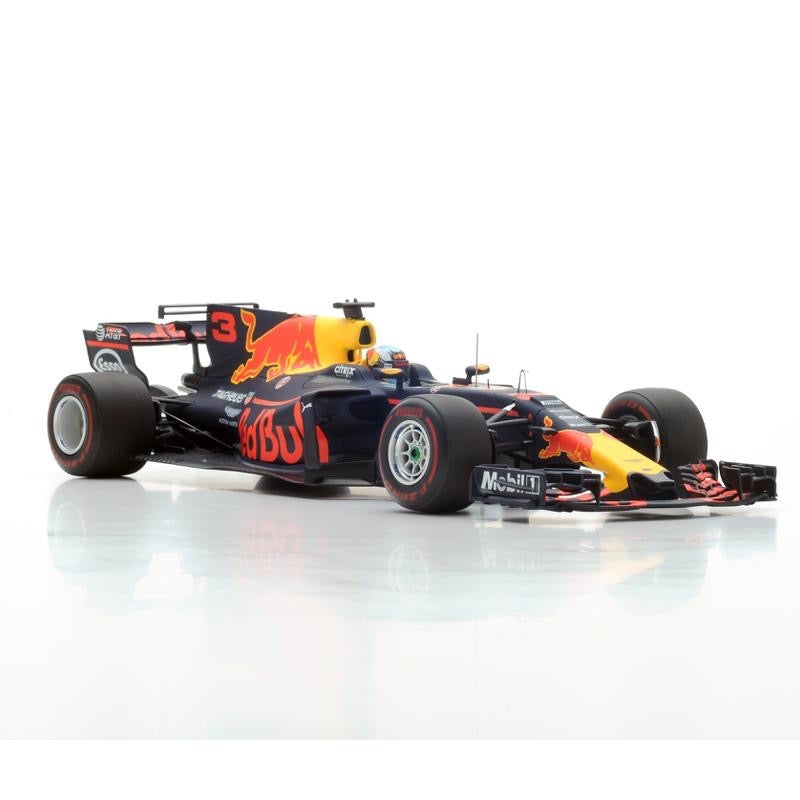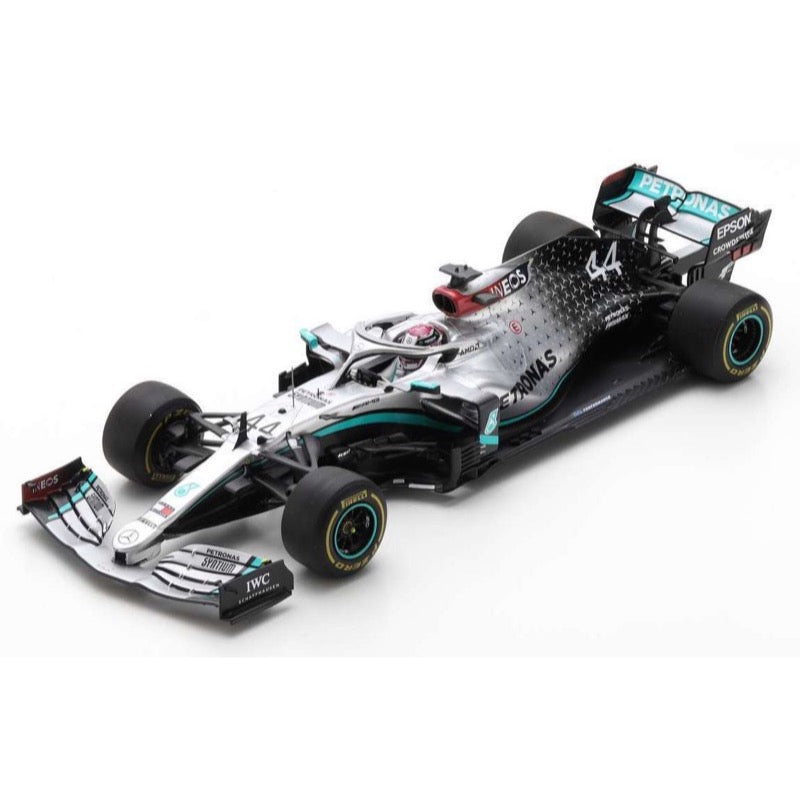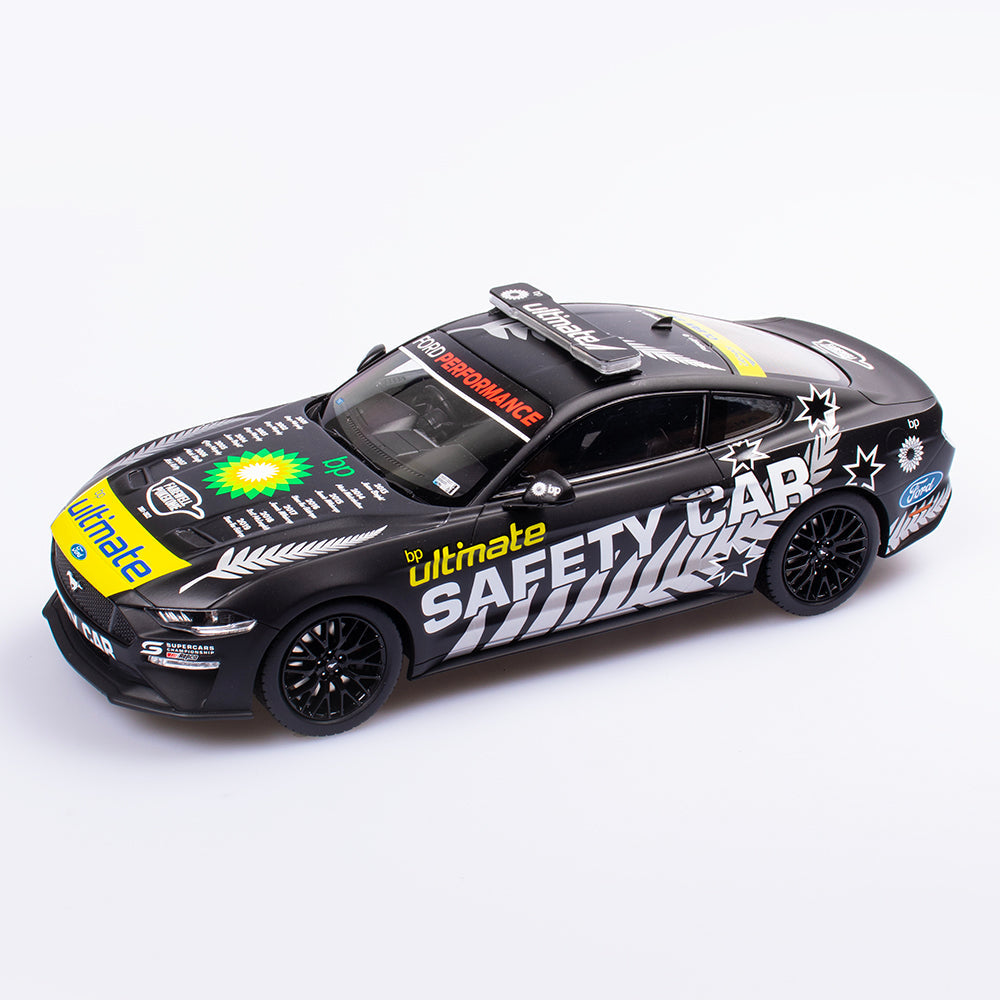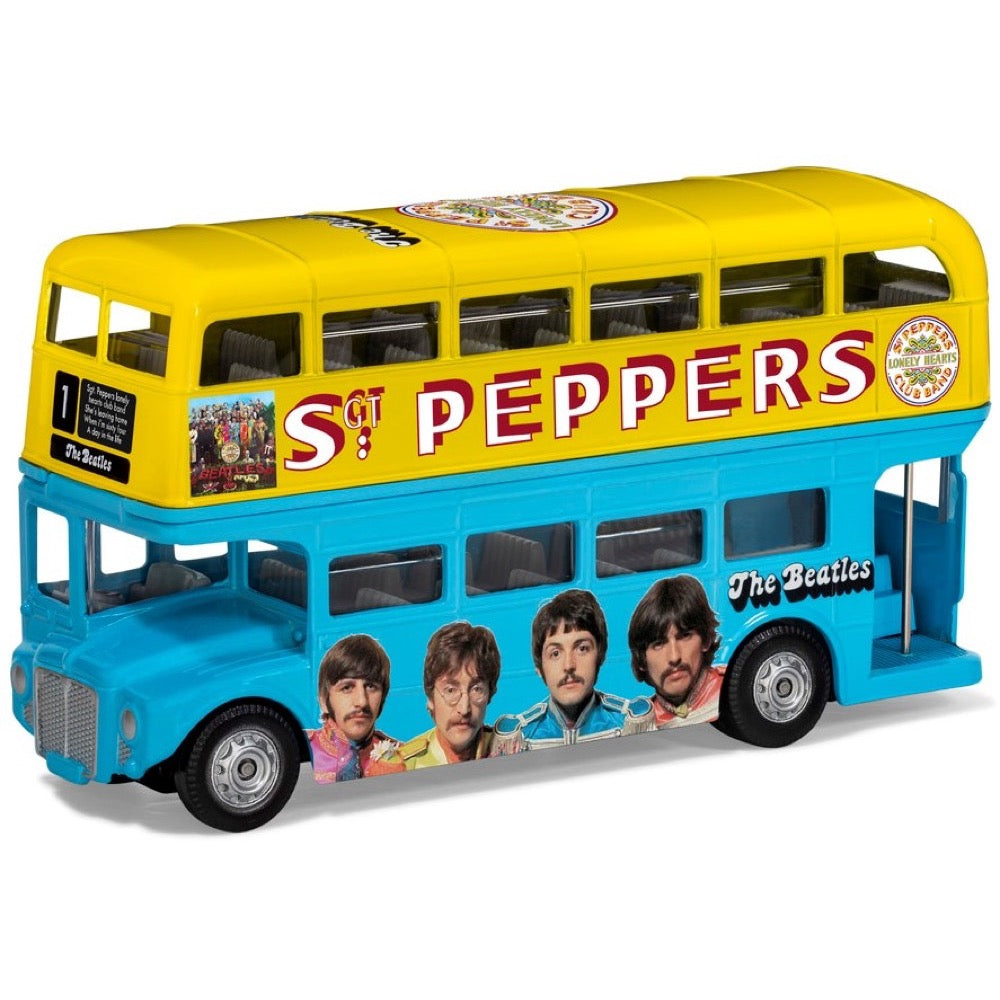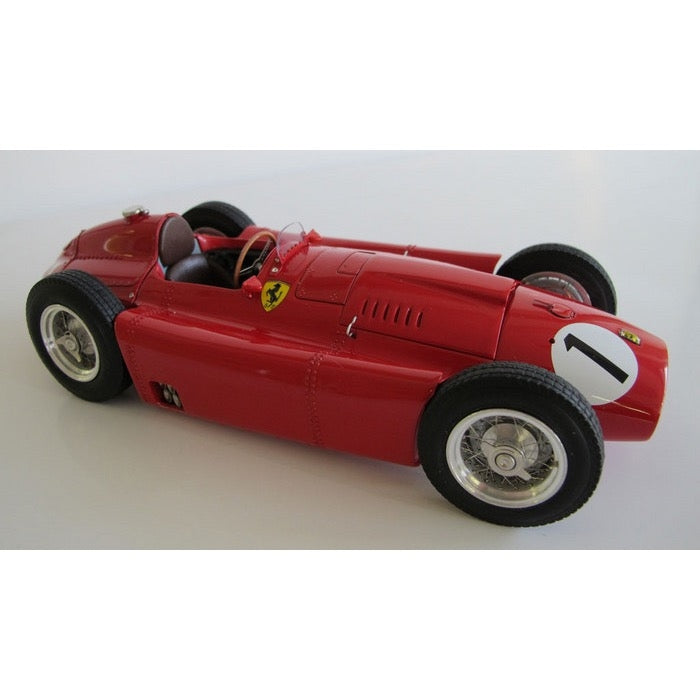
CMC M-197 1/18 Ferrari D50 1956 GP England #1 Fangio
327.00
$
<p>It was July 1, 1956. Crowds of spectators were coming to attend the sixth race of the 1956 World Cup at the Silverstone Circuit. The race would consist of 101 laps of the circuit here, covering a distance of 475.76 km. </p>
<p>Ferrari and Maserati were two top players of the game, and each would send four entrants to the race. From Ferrari, it was Juan Manuel Fnagio Alfonso de Portago, Eugenio Castellotti, and Peter Collins -- an English young driver already with two wins to his credit. All the Ferrari D50s were of the short-nose type, and the bow of Fangio's car was painted with a black start-ing number 1 on a white base circle. </p>
<p>Maserati used its regular drivers Stirling Moss, Jean Behra, Cesare Perdisa and Paco Godia. Another game player was Vanwall, a British racing team that was composed of Maurice Trin-tignant, Harry Schell and José Froilán Gonzaléz. After a long absence from the race, B.R.M. (British Racinng Motors) pinned its hopes on Mike Hawthorn, Tony Brooks and Ron Flockhart. Of course, the local team Connaught, which comprised Archie Scott-Brown, Desmond Tit-terington and Jack Fairman, was a fixture of the race, too. Then there was the the French racing team Gordini with two cars, which were to be driven by Hernando da Silva Ramos and Robert Manzon respectively. </p>
<p>Also present on the start-off field were private drivers. Among them was Jack Barbham and six other drivers, who would race in their private Maserati 250Fs. Altogether, there were 28 contestants this year, and only González from the Vanwall team had previously won at this race event. The race turned out to have a high failure rate. In the end, no more than 11 con-testants crossed the finish line. </p>
<p>During the practice, Fangio and Moss had fought for the best starting position. It was Moss who eventually got pole position -- the only time that Moss managed to do so for his Maserati 250F during the 1956 Formula One season. Fangio was the next to start off. He was followed by Mike Hawthorn, Collins, and two Vanwall drivers Schell and González in that order. </p>
<p>Fangio had a good start, but an early spin caused him to drop back. On lap 16, Moss was in the lead, and Hawthorn was close on his heels until technical problems forced the B.R.M pilot out on lap 24. Moss was now leading the field ahead of Salvadori in a private Maserati, and Fangio was in the third place. </p>
<p>Then Moss had to stop for a refill of engine oil, which cost him some valuable time, and he scrambled to make up for it when he was back on the track. On lap 63, Collins had to retire with a serious technical problem in his car, but he resumed racing in Portago’s car. On lap 69, Fangio took the lead. Shortly before the end of the race, Moss encountered problems again -- with a broken axle, which put him ut of the game. </p>
<p>After all the dust had settled down, Fangio won at Siolverstone for the first time in his career. His teammate Collins finished second, thus securing a Ferrari double victory. Nevertheless, Collins had to share the points of this 2nd place finish with Portago, which cost him a lot of lead in the drivers‘ standings. </p>
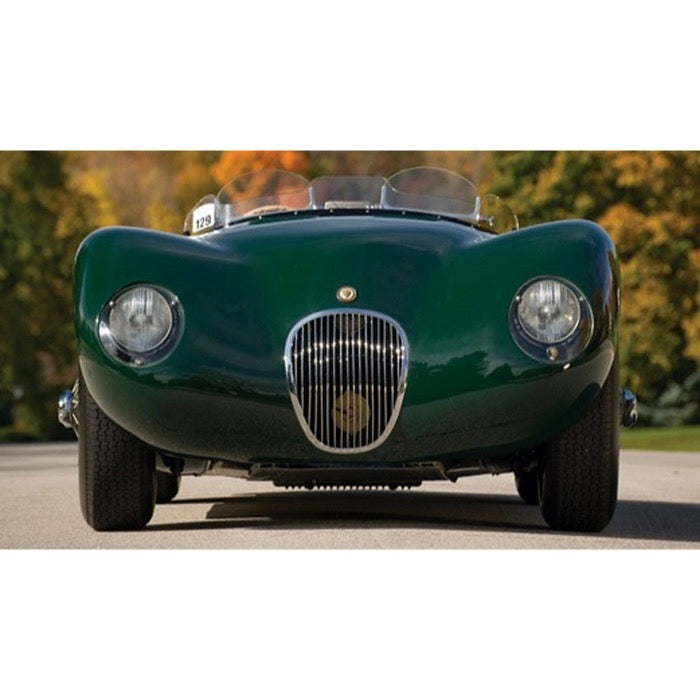
CMC M-191 1/18 Jaguar C-Type 1952 British Racing Green
327.00
$
<b>Origin of the C-Type </b>
<p>One would like to know what was going on in the minds of Heynes and Lyons, the two Jaguar executi-ves, who decided in the late summer of 1950 to take part in a race that would be held only a few months later at Le Mans. When the factory team arrived on the Sarthe in 1951 for training, the cars were unpro-ven. Were Heynes and Lyons really looking for a chance to win? The anwer came in the form of subse-quent victories of the C-Type at the Sarthe 1951 and 1953. </p>
<p>At the London Motor Show in 1948, Jaguar introduced its brand new XK 120 as a limited production mo-del for use in motorsport. Fascinated by the XK120 form and its technology, the crowd surprised the Ja-guar managers with significantly higher demand. Lyons decided to continue to develop the XK120 as a production vehicle and to offer it worldwide. In North Americ, the sale of the vehicle had overwhelming success. With its very close-to-introduction XK120 achieving an extraordinarily honorable success at 1950 Le Mans, William Lyons and Bill Heynes soon agreed to get the big shell in the following year with a Jaguar. </p>
<b>Development of the C-Type </b>
<p>Developed with goal Le Mans. The long-distance classic was the main target for Jaguar, and its management was aware of the marke-ting effect of a success in Le Mans. Accordingly, Jaguar put emphasis on high reliability, good handling characteristics, and aerodynamic balance of speeds. Chief engineer Bill Heynes did a great job. The engi-ne of the XK 120 was upgraded with larger SU carburetors to 210 hp. The chassis was redeveloped as a tubular frame. In addition Jaguar introduced a lightweight aluminum body with only one door for the driver. The design was a contribution by Malcolm Sayer, a gifted engineer who had years of experience designing for the English RAF aircraft. </p>
<p>The cockpit was protected only by a small racing disc. Also, the space in it was rather than narrow. But Jaguar drivers like Moss, Walker or Whitehead found in the cockpit of the C-Type all the necessary in-struments and even spare spark plugs and tools for repairs during the race event. </p>
<b>Successful (almost) everywhere </b>
<p>The new car was tested in the hinterland near the Jaguar home in Coventry. There were a few things that could be improved, and then they set off with their drivers to France. Jaguar came, drove and won. The lead on the runner-up was nine rounds! The drivers also set a new distance record. After the success in Le Mans in 1951, other victories followed, including in Goodwood, Reims, Torrey Pines, and, of course, the renewed victory at Le Mans in 1953. </p>
<p>The appearance of Jaguar at the Sarthe 1952 failed, and all three vehicles were eliminated by overheating of the engines. It was rumored that Stirling Moss thought the new Mercedes SL were stronger than they actually were in the race. The failure of the Jaguar fleet made the Mercedes victory no less valuable, but a little easier. The next attempt came in 1953. The Jaguar team was equipped with more powerful engi-nes, three Weber carburetors and Dunlop disc brakes in the improved C-type. It was followed by game, set and victory. Among the first ten vehicles that flew past the panned flag on June 27, 1953 were four C-Type: 1st, 2nd, 4th and 9th. William Lyons dedicated this triumphal march to Queen Elizabeth, who had just been enthroned. Her Majesty returned the favor in her own way and knighted the Jaguar chief in the spring of 1956. </p>
<b>The History of CMC's Documented Vehicle by Dr. Ing. Christian J. Jenny </b>
<p>The Jaguar XK 120 C, with chassis #XKC 023, briefly referred to as C-Type #23 (where C stands for Compe-titon). Once the car was found in major race events on American West Coast circuits, often with well-known people from the movie and automobile circles as pilots. It started to slip into the oblivion at the end of the sixties. </p>
<p>CMC will launch a standard edition of the Jaguar C-Type in the classic British Racing Green. This 1:18 model will be furnished with black leather seats and a passenger-seat cover.
</p>
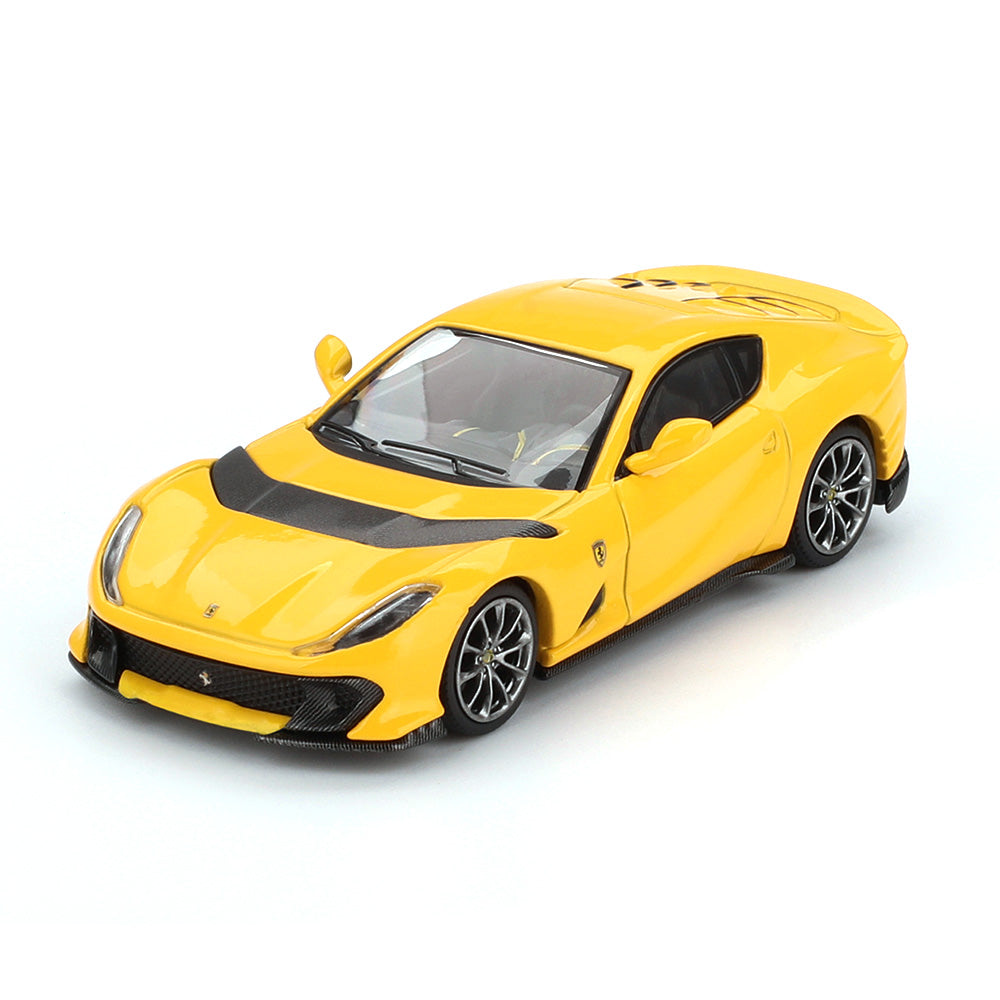
BBR Ferrari 812 Competitizone Giallo Modena
20.00
$
<p>BBR, an Italian company that specializes in precision handmade model cars, is pleased to introduce a new, exquisite model, developed using their know-how!</p>
<p>A yellow color has been released as a variation of the Ferrari 812.<br>The 812 in the car's name refers to its 800 horsepower V12 engine.</p>
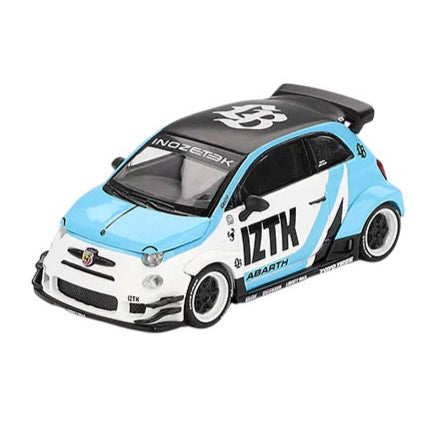
Mini GT MGT01051-L 1/64 Abarth 595 LB-WORKS x Abas Works IZTK
10.00
$
<p>This MINI GT 1:64 ABARTH 595 LB-WORKS x Abas Works Grey features the powerful and iconic Fiat Abarth. Experience the dynamic and sleek design of the Abarth, delivering a thrilling drive and impressive performance. Claim your piece of automotive history and elevate your collection with this must-have model.</p>
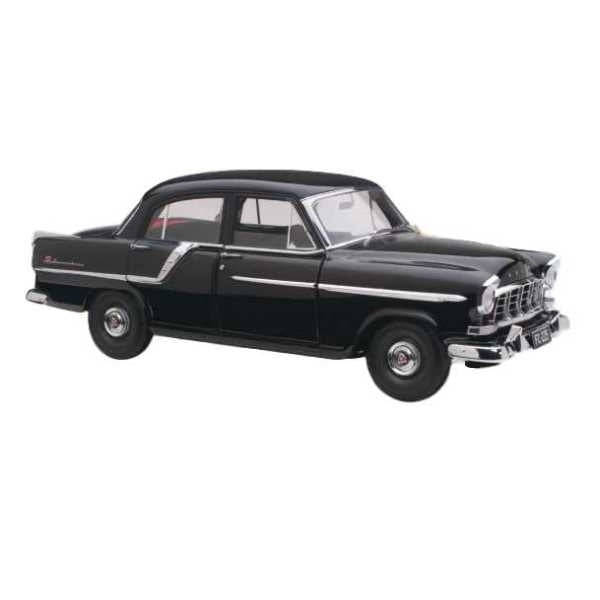
Classic Carlectables 18672 1/18 Holden FC Special Black with Riff Red and Black Interior*
108.00
$
<p>The Holden FC was a great achievement for Holden, introduced on the 6th of May 1958. The model was extremely popular, at its peak the model had over 50% of the market share. In the production of the FC it was the first time Holden had produced more than 100,000 units in a year. Holden created a major milestone with the FC when on October 22nd 1958 it became the 500,000 Holden produced. The Managing Director Earl C Daum presented the car (a Station Sedan) to the Royal Flying Doctor Service.</p>
<p>As with previous Holden models, the FC was a revised version of previous model. The revision of a model half way through its life helped maintain interest and sales. The FC was an improved version of the FE.<br>The most notable upgrades were to the external body, with chrome trim now dominating the side of the car. The front grille was much bolder with the front indicators now incorporated into the front bumper, chrome tail fins were also a new addition to the rear of the car. The interior also had a make over with new door liner and seat trim. The steering wheel featured a half ring horn to give greater visibility of the instruments which also had an upgrade, with a shroud around the dials to reduce reflections.</p>
<p>The starting price of FC was £1110 for the Standard Sedan and £1173 Special Sedan, great value for a car that out performed most of its rivals. After a production run of 191,724 vehicles, in January 1960 the FC was replaced by an all new model the Holden FB.</p>
<p>Item includes certificate and production number plate, mounted to the chassis.</p>
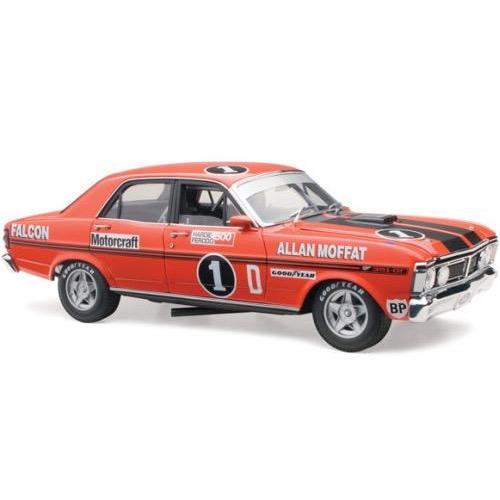
Classic Carlectables 18700 1/18 Ford XY Falcon Phase III GT-HO 1972 Bathurst Allan Moffat
116.00
$
<p>The 1972 Bathurst was memorable as it was the first time rain had significantly affected the race. It was won by Peter Brock driving a Holden Dealer Team Torana, the first of Brock’s record nine victories. Brock finished a lap ahead of Queensland racer John French driving a Ford XY Falcon GT-HO Phase III, this despite Brock being penalised one minute at his last pit stop for starting his car while the HDT crew were still re-fueling.</p>
<p>Pole sitter and winner of the previous two Bathurst races, Allan Moffat, had a race he would rather forget. After dicing for the lead with Brock in the early laps, Moffat spun his Phase III Falcon at Sulman Park on top of The Mountain in the wet conditions. Although he would fight his way back, he would twice be penalised one minute for restarting his car during pit stops before the re-fueling had been completed. Later in the race the Falcon would also encounter brake problems and Moffat dropped back to finish the race in 9th place, 8 laps down on Brock.</p>
<p>Item includes certificate with individual production number. </p>
<h3>Specification</h3>
<ul>
<li>Scale: 1:18</li>
<li>Type:Road Cars</li>
<li>Limited Edition Quantity: 500</li>
<li>Driver: Allan Moffat</li>
</ul>
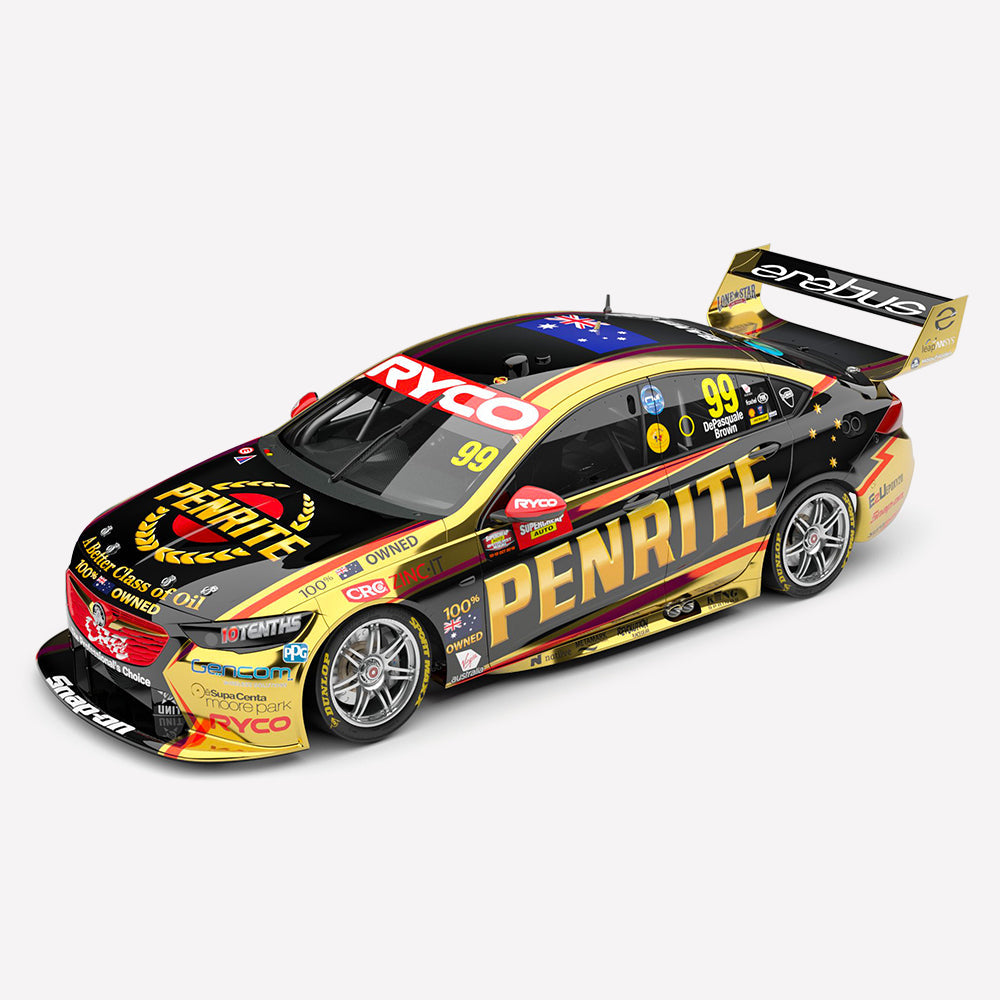
Authentic Collectables ACR18H19D 1/18 Penrite Racing No.99 Holden ZB Commodore 2019 Supercheap Auto Bathurst 1000 Anton De Pasquale / Will Brown
104.00
$
<p>Over the years, Erebus Motorsport have raced some incredible looking cars at the Bathurst 1000 - some more successful than others.<br><br>In 2019 the team tackled the mountain for The Great Race in a pair of gold chrome ZB Commodores backed by Penrite with the cars featuring a significant degree of wow factor. And why not, the team were hot off a win at the 2017 race and a pole in 2018, which based on pure race pace, were very unlucky not to turn into a 2nd win in as many years.<br><br>The 2019 race result was a mixed bag for the team, David Reynolds and Luke Youlden dragged their #9 ZB across the line to finish a very respectable 5th, while Anton De Pasquale and Will Brown, racing #99 suffered a DNF after a clip of the wall sent De Pasquale hard into the fence across the top of the hill.<br><br>Results aside, many Erebus collectors have often requested we produce these models to add to their Bathurst 1000 collections. With such an awesome chrome livery featured on the car, this 1:18 scale model will be a great addition for those collectors.<br><br>This model has been produced as a sealed body with clear windows and detailed interior in a limited edition of only 84 pieces with an individually numbered Certificate of Authenticity.</p>
<h3>Features</h3>
<ul>
<li>1:18 Scale Penrite Racing #99 Holden ZB Commodore</li>
<li>Sealed body die-cast with clear windows and detailed interior, presented in display case</li>
</ul>


